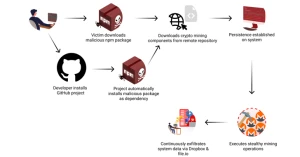الدورات
title
The Future of Serverless Security in 2025: From Logs to Real-Time Protection

As cloud-native architectures continue to dominate, serverless environments like AWS Lambda are leading the charge with unparalleled scalability and efficiency. However, the security challenges of serverless computing remain a significant concern. Traditional security methods, such as log monitoring and static analysis, fall short in providing comprehensive protection, especially against modern, sophisticated threats. Here's why these methods are insufficient and how advancements in runtime protection are reshaping serverless security.
Challenges in Current Serverless Security Practices
1. Logs Provide Incomplete Visibility
While logs are excellent for tracking external-facing activities, they fail to capture internal function behaviors. For instance, if an attacker injects malicious code that operates entirely within the function, traditional log-based security tools won’t detect it.
- Example Scenario: An attacker executes unauthorized processes or manipulates files without triggering external-facing log events.
- Solution: Real-time monitoring tools can provide visibility into a function's internal execution, identifying and neutralizing rogue activities before they escalate.
2. Static Analysis Misses Runtime Threats
Static tools are useful for spotting misconfigurations, like overly permissive IAM roles or exposed environment variables. However, they cannot detect real-time exploitations or dynamic deviations in behavior.
- Example Scenario: A vulnerable open-source library in a Lambda function is exploited for remote code execution.
- Solution: Sensors that monitor runtime behavior can detect and block exploitation attempts by analyzing deviations in function behavior as they happen.
The Real-World Implications of Limited Serverless Security
Case Study 1: Malicious Code Injection
An attacker injects code into a Lambda function to spawn unauthorized subprocesses or connect to external IPs.
- Problem: Log-based tools miss internal actions like code execution.
- Solution: Runtime monitoring tools can detect such malicious activities and prevent further damage.
Case Study 2: Vulnerable Libraries
A function uses an open-source library with a known vulnerability that attackers exploit.
- Problem: Static analysis identifies vulnerabilities but lacks real-time insights into how the library is used during execution.
- Solution: Tools with real-time visibility can detect misuse or exploitation attempts, blocking threats proactively.
2025 and Beyond: A Paradigm Shift in Serverless Security
The future of serverless security lies in shifting from reactive methods to proactive runtime-focused protection. As organizations adopt modern cloud security practices, serverless environments need solutions capable of detecting and responding to threats dynamically.
Introducing Sweet Security’s AWS Lambda Serverless Sensor
Sweet Security is leading the way with an innovative sensor designed specifically for AWS Lambda environments. This sensor addresses critical gaps in traditional serverless security approaches by offering real-time monitoring and protection.
Key Features of Sweet’s Lambda Sensor
- Comprehensive Runtime Monitoring:
- Tracks system calls, internal behaviors, and interactions within the Lambda environment, providing unparalleled visibility.
- Real-Time Threat Blocking:
- Detects suspicious actions—such as unauthorized processes or external connections—and blocks them instantly.
- Anomaly Detection:
- Continuously monitors function behavior, identifying deviations from normal operations and neutralizing threats before they escalate.
Why Real-Time Protection is Essential for Serverless Security
As serverless computing becomes the backbone of modern cloud infrastructure, traditional tools like logs and static analysis can no longer safeguard against dynamic and sophisticated attacks. With Sweet Security's real-time monitoring and anomaly detection, organizations can confidently embrace serverless computing while ensuring robust protection against evolving threats.





